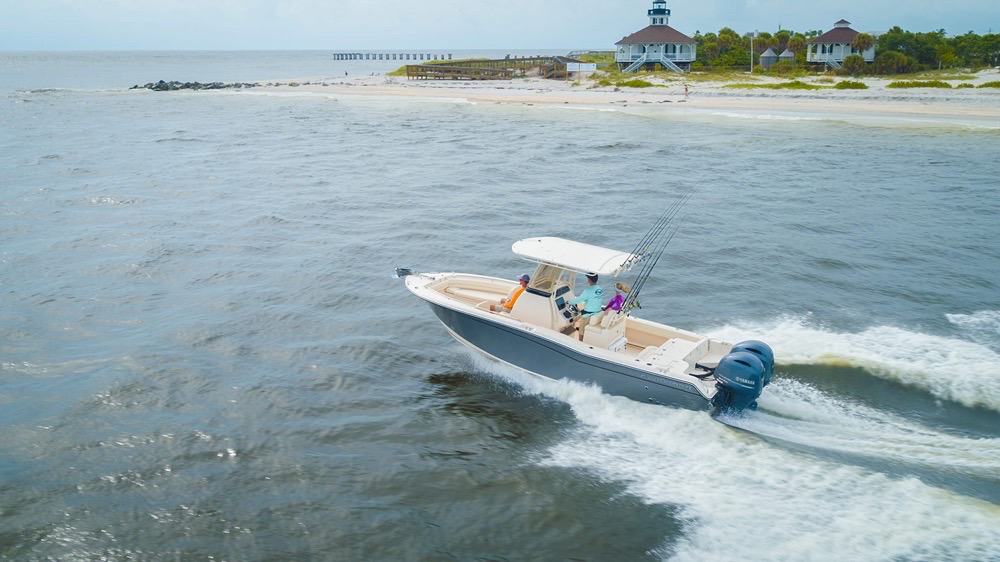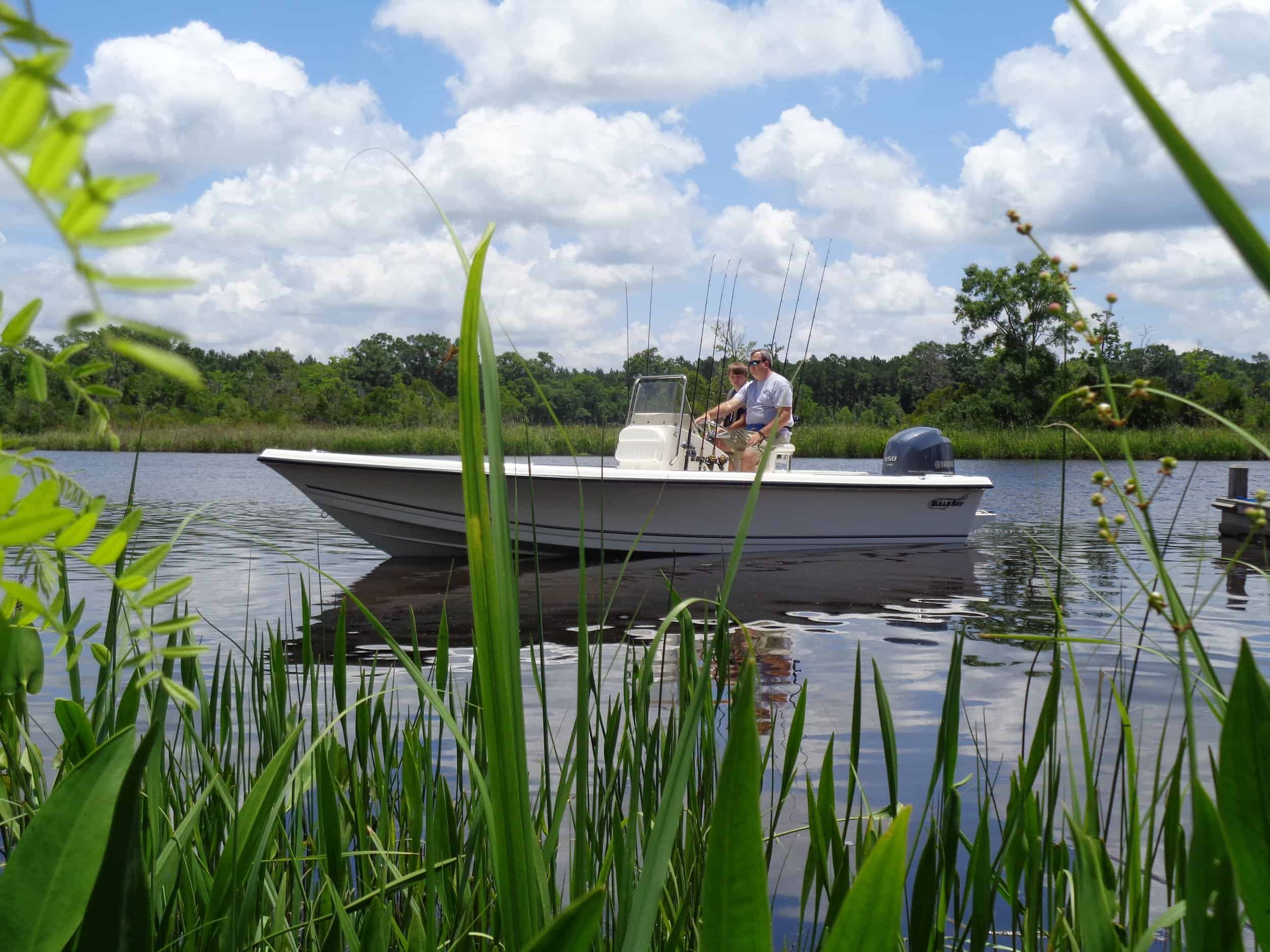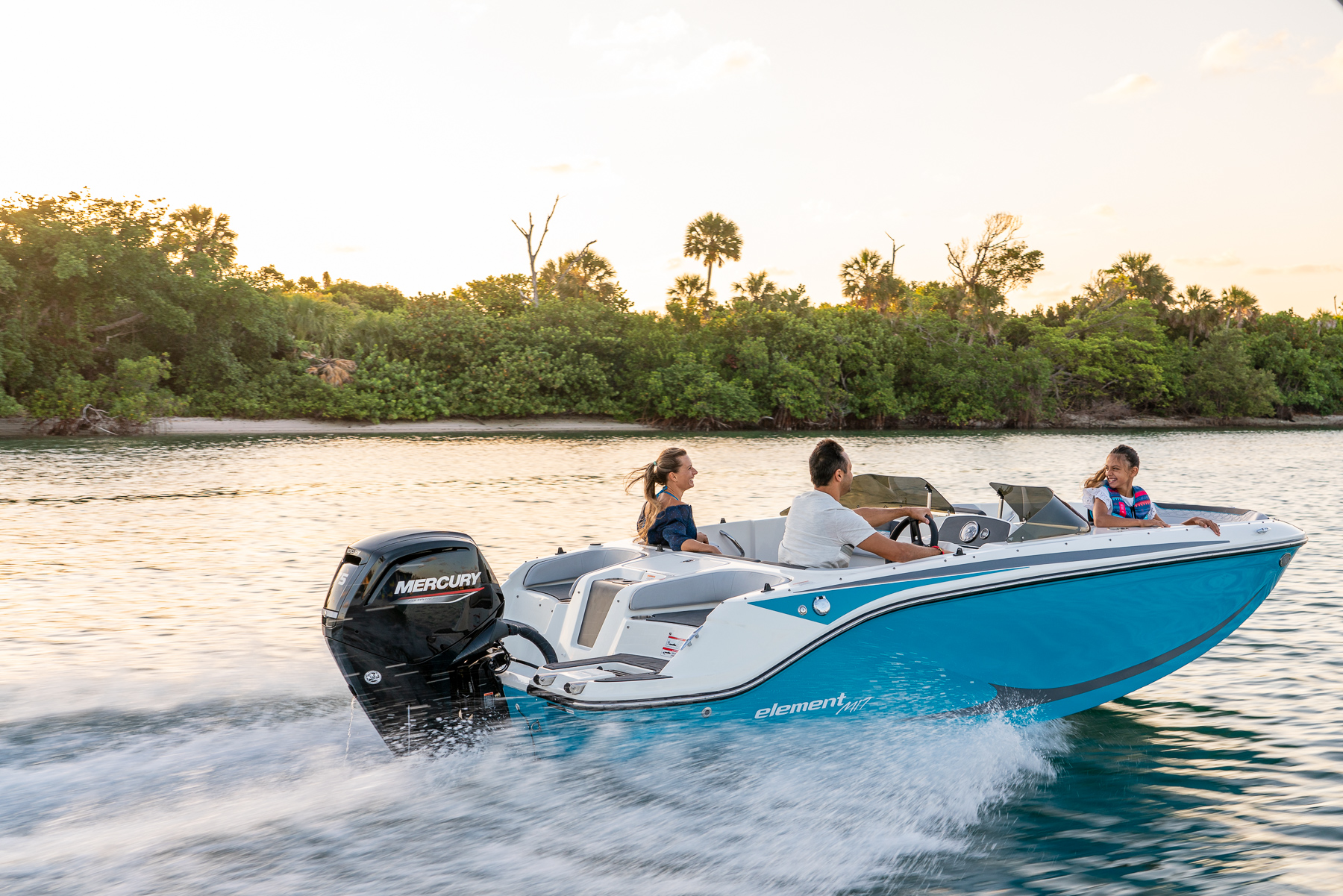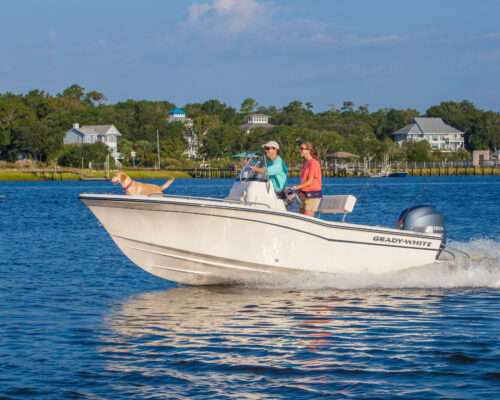Grady-White Fisherman 257
LOA: 24′ 9″
Beam: 8′ 6″
Draft: 20″
Transom Deadrise: 20 degrees
Weight: 4,300 lbs. (w/o engine)
Max HP: 400
Fuel Capacity: 135 gal.
Available through Tri-State Marine (tristatemarine.com), Norfolk Marine Company (norfolkmarine.com), and Taylor Marine (taylormarinecenter.com).
What makes a good day for a sea trial? How about 15 to 20 knots of east wind pushing against an ebb current sliding out of the Bay to meet the Atlantic at Cape Henry? That’s what Norfolk Marine President Jason Murphy ordered up for our ride on Grady-White’s Fisherman 257. We couldn’t have asked for better conditions to let this sturdy center-console fishing/family boat show off its SeaV2 hull. From Baltimore to the Virginia Capes, this is a sweet rig for folks who spend the bulk of their time on the Chesapeake’s open waters. It’s seaworthy, safe, comfortable, and well-designed for multiple assignments.
The storied firm C. Raymond Hunt Associates collaborated with Grady-White’s engineers on design of the SeaV2 hulls, a hybrid deep-V shape with bottom deadrise varying continuously from a moderate V at the transom to a very sharp V at the bow. The apex of the V is rounded from the stern almost to the bow. Complementing it are two precisely-shaped strakes on each side, and wide, also precisely-shaped chines (corners where the bottom meets the sides). Grady-White’s website offers several graphics and videos that explain the design in more detail.
In practice on test day, the hull was impressive. Most dealers in the U.S. stock the Fisherman 257 with twin Yamaha F150s or F200s, but our test boat had a single F300. The F300 showed plenty of power and acceleration with four people aboard and a full fuel tank, planing off easily at speeds below 15 knots with no bow rise. In the short, 2–3′ seas we encountered at the Bay’s mouth, supplemented by some larger ocean swells, that speed was very comfortable, with spray coming aboard only when quartering into the wind. A touch of the leeward trim tab raised the windward side to damp that out, while the flared bow, chines, and strakes provided plenty of buoyancy to rise to the seas. We throttled up as high as 30 knots without the hull coming down hard, but it was clearly an 18- to 22-knot day (3,700–4,000 rpm). According to Yamaha’s performance data, this rig tops out at about 37 knots (5,900 rpm).
We slowed down to trolling speed and then drifted both into and broadside to the seas. The boat’s motion was easy, meaning it would be a comfortable platform for any job, from trolling along the Chesapeake Bay Bridge-Tunnel to seabird-watching at the artificial island by the Hampton Roads Bridge-Tunnel. Running back inside Cape Henry, the hull tracked easily up the backs of the seas and down into their troughs. Again, the bow’s buoyancy and flare sent all spray out to the side. The rugged, all-composite construction shrugged off waves without a shake or a rattle.
Grady-White likes to stress its “exceptional attention to detail.” That shows not only in the hull design but all over the boat. The company listens to its owners, dealers, service people, and customers, refining its existing models whenever good ideas pop up. The whole point is to build safe, comfortable boats that can fish hard but also provide families with great days on the water.
While many people opt for the company’s Freedom line of dual-console models, there are family advantages to the Fisherman 257’s center-console layout. For one, it provides a large open space in the bow. That includes port and starboard cushioned bow-bench seating with forward-facing backrests that fold away when not needed. A recessed grab bar runs along each side of the gunwale. The benches each hold 120-quart insulated fish boxes with overboard drains. The port box has a removable divider for separating food and drink from fish and bait. An optional insert between the benches converts the whole space into a casting platform with cushions removed. For picnics, ask for the optional table that fits the space. A simple sunshade for this area is also optional.
The console’s placement in the center offers plenty of headroom (66″—we measured) and space inside for changing clothes or using the portable toilet (with deck pumpout). There are two large dedicated bins and an elastic net for storage inside, along with electronics access to the backside of the helm (chartplotter/fishfinder, VHF, stereo, and Yamaha engine management display). We would, however, like to see some natural light inside through a porthole, maybe on the port side, and a fan for active ventilation. The front of the console holds a cushioned seat for two, set over the two console storage bins.
The helm offers a compass on top, plenty of space for flush-mounting a couple of large electronic displays and a VHF, along with the Yamaha engine management display and a controller for the stereo. Standard steering is hydraulic, controlled by a tilting stainless wheel with knob. (Yamaha’s Helm Master EX Digital Electric Steering is optional.) The fiberglass T-top rests on a painted aluminum frame, with an integrated, scratch-resistant acrylic windshield (wiper with washer included), a handrail, an overhead radio box, storage net, dome light, spreader light, four rod holders, a radar flat, and outrigger plates.
The trim tab controller mounts under the steering wheel, and I bumped the single-lever engine control unintentionally while reaching for it, which my crew did not appreciate. The problem might have been my own inexperience with the boat or overly light tension on the lever. Both would be easily remedied, but it’s worth a new skipper’s attention.
The ingenious helm seat for two includes a cushioned backrest and a split, flip-up bolster for sitting or leaning. The sides offer a pair of vertical storage compartments with nets. On the aft side are a holder for knives and pliers, tackle trays, lockable storage, and four rod holders. A 65-quart Yeti cooler beneath is an option. Each gunwale has two vertical rod holders, plus horizontal racks for three rods up to 7′ beneath and a toe rail for safety. The transom bulkhead offers a well-plumbed, 32-gallon livewell to port, a 182-quart insulated fish box in the center, and a door to starboard leading to the afterdeck/swim platform and its retractable ladder. With a single engine, the space back there makes it easy to move around, keeping a hooked fish from fouling its line on the engine. In front of the big fish box is a cushioned folding seat for two. It flips up and over the transom for access to plumbing and wiring in the bilge. Last but definitely not least, the cockpit has four drains carefully designed to free any spray or rain quickly. Efficient, systematically-engineered drainage is a Grady-White hallmark for safety in rough water.
Fishing? Whether jigging around any Chesapeake bridge, bridge-tunnel, or underwater ledge, trolling with planer boards, chasing breaking fish around Point Lookout, running a buoy line for cobia, or bottom fishing for panfish, there’s not much open-water work in our Bay that the Fisherman 257 can’t handle. It’s built into its DNA.
There’s one last detail: the Captain Grady digital boat systems and operations guide for iPad & iPhone. It’s a standard feature to help owners understand all of the Fisherman 257’s operating systems. That’s one more reason why Grady-White consistently wins Customer Satisfaction Index awards, and why this boat is built well enough
to serve multiple missions for several generations of family and friends.
MSRP for the Fisherman 257 with Yamaha’s new F300 and its Helm Master EX Digital Electric Steering is $140,215. (standard hydraulic is $735 less). For more information, visit gradywhite.com.




